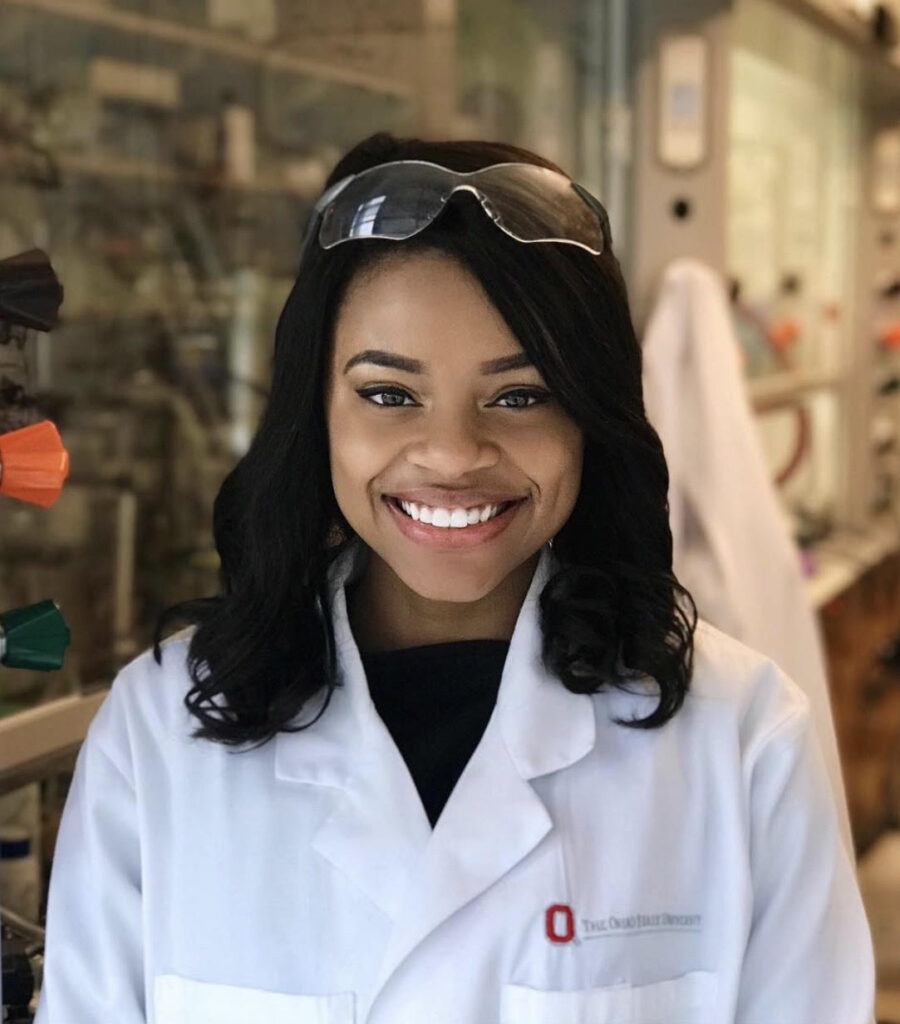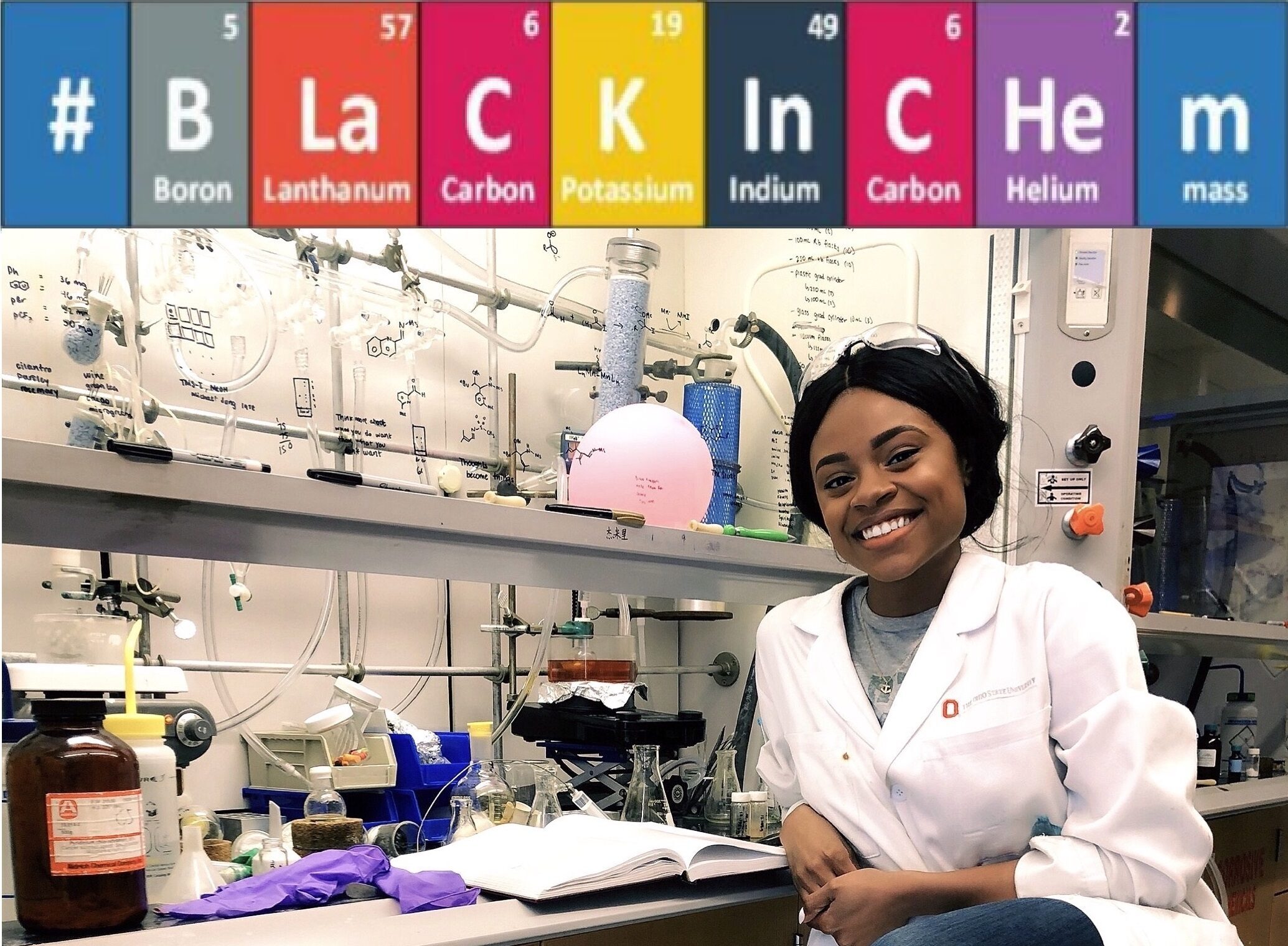Profile written by Nicole, a writer for the Skeptical Chemist and a Linguistics and Anthropology undergraduate at the University of Edinburgh

Joy Rutherford has always harbored a passion for science from a very early age. Born and raised in Kalamazoo, Michigan, she spent much of her high school days taking college-level classes at the Kalamazoo Area Mathematics and Science Center (KAMSC). But it was only during her junior year of high school that she realized chemistry was her true calling.
With a natural inclination towards the beauty world, Joy used to research hair ingredients, concoct her own beauty products and even ran a blog regarding hair care. It didn’t occur to her that being able to point out all the chemical ingredients in beauty products and explaining their function was considered chemistry. This all changed when she sat in Ms. Cheryl Hach’s organic chemistry class at KAMSC. When Ms. Hach started explaining about chemical hair “relaxers” that work by breaking the hair’s disulfide bonds and resetting the hair’s natural curls permanently into a straighter alignment, she realized that was her calling all along.
But this was only the start of her staunch passion and journey delving into the world of chemistry. Joy was awarded the ACS Society of Industry Scholar in 2016, which gave her the opportunity of a summer internship at Milliken and Company. Quote: “It was my first experience doing chemistry in an industrial setting and I instantly fell in love with it. I loved how practical industrial chemistry was and how I could be synthesizing goods and technologies that could be directly used by consumers. From that experience, an aspiring industrial chemist was born.”
She went on to graduate with a B.S. in Chemistry from Michigan State University and is currently a fourth-year Ph.D. candidate and NIH Research Fellow at The Ohio State University. Joy works as an organic chemist in the Nagib lab, developing methods to synthesize prevalent motifs in pharmaceuticals using the power of photochemistry and radical-mediated pathways. Her particular project is a cross-selective, aza-pinacol coupling reaction involving the coupling of aldehydes and imines. The product of aza-pinacol couplings is beta-amino alcohols, which are a privileged motif in pharmaceuticals and ligand scaffolds. In her free time, she’s a multi-faceted personality, with an interest in singing, traveling and learning languages like Spanish and Korean!
In the length of her Ph.D. program, the one thing Joy is most proud of is becoming an NIH (National Institutes of Health) Research Fellow. It was something she worked really hard on and states that “it has truly been a blessing to be able to focus on just research throughout my time in my Ph.D.”
However, the road to success in this field isn’t always smooth – especially for people of color, who often go misrepresented and overlooked. Joy pointed out one particular challenge that she had to go through diversity-wise, was feeling as though she had to work twice as hard to be respected in this field. She speaks of how certain people look at her achievements and assume she was only given opportunities because of her skin color, and not because of her competency and capability.
Given what she has gone on to accomplish, this might be overlooked as a minor issue, but the repercussions were huge. It caused Joy to feel like she had to be hyper-aware of how she presented herself all the time, just so people could take her and her science seriously. She also found herself not wanting to speak up as much and ask questions, out of fear of contributing to the notion that she was not as knowledgeable as her peers.

On top of that, people of color face many stereotypes that they have to overcome – no matter their fields of expertise. Joy speaks of one misconception, the Angry Black Woman Trope – the idea that black women are loud, have bad attitudes and are overly angry or aggressive. Black women in the workplace have to constantly fight against these views, with many making conscious efforts not to be labeled as such.
“Another misconception about black women is that we are strong. This sounds like a positive trait at first, and indeed it is in certain instances, but it can rob Black women of feeling like they can be human. Feel pain. Feel emotions. Pursuing a Ph.D. in chemistry can be a very stressful journey. Black women are not impenetrable to the stress.”
Joy is strongly aware of the fact that she not only represents herself, but a whole community of aspiring Black scientists, including those who might not have access to the opportunities she was afforded. She is determined to be successful in her field so that she can help and inspire those that look like her to do the same. In that regard, she took up the position of Vice President at OSU’s NOBCChE chapter (National Organization for the Professional Development of Black Chemists and Chemical Engineers). She is also involved as the Vice President of a recently founded group at OSU called FOCUS (Females of Chemistry Uniting Scientists).
Although the road ahead is not an easy one, Joy remains optimistic about the future. She feels that chemistry could definitely use more diversity – “My dream is to see the day when chemistry is as diverse as the world we live in. We all have such unique experiences and points of view, and including more of these voices in the conversation can only benefit the field.”

